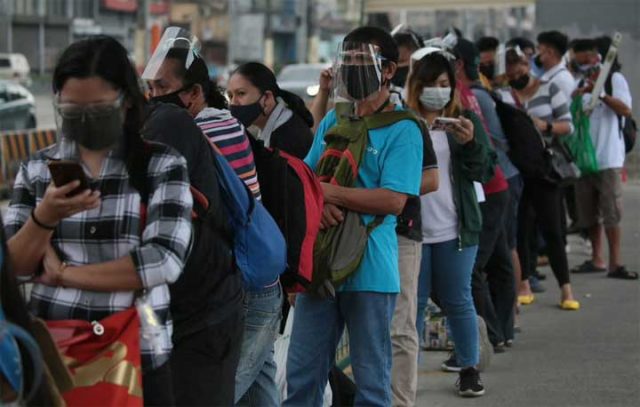Lockdown to deepen ‘economic scarring’

S&P GLOBAL RATINGS downgraded its Philippine growth outlook to 4.3% for 2021, warning that the ongoing coronavirus pandemic and stringent lockdown measures will likely stifle its economic growth potential in the next four years.
This latest estimate is sharply lower than the 6% gross domestic product (GDP) growth projection it gave in June, the debt watcher said in a note on Thursday.
“The longer downturn will cause even more economic scarring. 2025, the Philippines’ GDP will likely be 12% below where it would have been without the pandemic,” Vincent Conti, senior economist for Credit Markets Research at S&P, said.
S&P released its new growth outlook for the Philippines a day after the government cut its full-year growth target to 4-5%.
The Development Budget Coordination Committee had said that without the current spike in coronavirus disease 2019 (COVID-19) infections and the more stringent lockdowns, the previous 6-7% GDP growth target was achievable.
The Philippine economy was expected to rebound strongly this year, mainly on base effects after GDP contracted by a record 9.6% in 2020.
“The combined hit to activity from floods in parts of the Philippines and fresh lockdowns to contain the pandemic has significantly eroded what would have been a highly favorable base effect for the country,” Mr. Conti said.
The economy exited recession in the second quarter, growing by 11.8% year on year but falling 1.3% on a seasonally adjusted quarter-on-quarter basis. For the first half, GDP rose by 3.7%.
Socioeconomic Planning Secretary Karl Kendrick T. Chua had said the economy has to grow by at least 4.3% in the second half to reach the low end of the revised target, and by 6.3% to achieve the high end of the growth goal.
Meanwhile, S&P expects a faster 7.7% GDP growth in 2022 from 7.5% previously. This is within the government’s 7-9% target for 2022.
2023 and 2024, S&P forecasts the economy to grow by 7.4% and 7.3%, respectively.
“Emerging Southeast Asian economies are facing intense headwinds from persistent coronavirus disease 2019 pandemic waves. The duration and severity of the pandemic has been more adverse than our previous baseline expectations,” the report said.
Under S&P’s new projections, Vietnam is seen growing by 4.8% this year. Meanwhile, Malaysia (3.2%) and Thailand (1.1%) are expected to expand at a slower pace than the Philippines.
“As the pandemic drags on, balance sheets will deteriorate for households, small and midsize enterprises, banks, and the wider economy, leading to more medium-run economic scarring,” S&P Asia Pacific economist Vishrut Rana said.
Metro Manila is under an enhanced community quarantine until Friday, when President Rodrigo R. Duterte will announce the new quarantine restrictions.
The Health department on Thursday recorded 14,895 new COVID-19 cases, bringing the active cases to 111,720. This is the second-highest daily increase in infections since the start of the pandemic, Reuters reported.
S&P’s Mr. Conti said the lockdown restrictions will continue to affect consumption and investments.
“The escalated restrictions on mobility will inevitably impact consumption the most, with some secondary impacts on investment. In terms of sectors, face-to-face services continue to be the most disadvantaged, but this will also have some impacts on construction activities,” Mr. Conti said in an e-mail.
In May, S&P maintained the country’s “BBB+” rating with a “stable” outlook, citing expectations for a “healthy” economic recovery that will help the country improve its fiscal standing.
In a separate report, Moody’s Analytics noted how restriction measures in some Southeast Asian economies have not been able to control the Delta-driven outbreaks, threatening the recovery outlook.
“In severely impacted countries such as Malaysia and the Philippines, restrictions have lacked effectiveness in containing outbreaks, thereby mandating an extension of inhibiting curbs,” Moody’s Analytics economist Shahana Mukherjee said in a note on Thursday.
Moody’s Analytics last week revised their growth projection for the Philippines this year to 4% from 4.9% previously.
With the surge in cases, many Asian countries have sought to pick up the pace of its vaccination rollout.
“But even with this step-up in momentum, policy shifts in vaccine preference and supply issues are significant binding factors that will moderate the region’s progress and delay the timing of reaching herd resilience,” Ms. Mukherjee said.
Only 11.81% or 12.88 million of the Philippine population have been fully vaccinated, based on data released by the Palace on Thursday.
The government targets to have 70 million Filipinos fully vaccinated this year.
